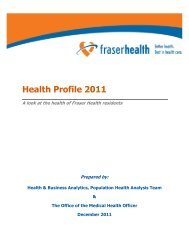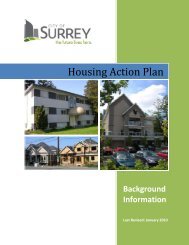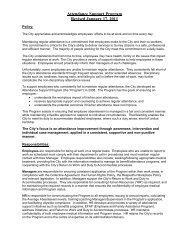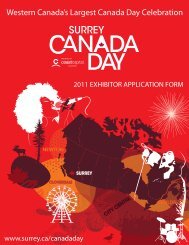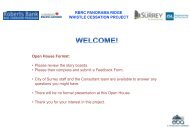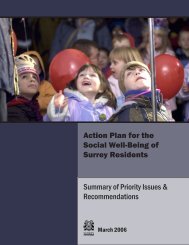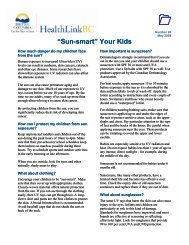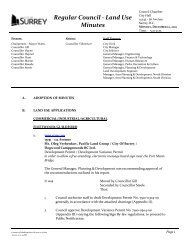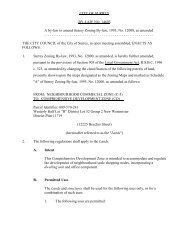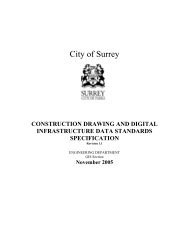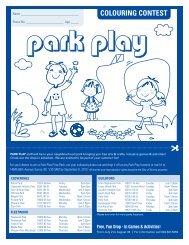Blackie Spit Park: Wildlife Habitat Enhancement Plan - City of Surrey
Blackie Spit Park: Wildlife Habitat Enhancement Plan - City of Surrey
Blackie Spit Park: Wildlife Habitat Enhancement Plan - City of Surrey
Create successful ePaper yourself
Turn your PDF publications into a flip-book with our unique Google optimized e-Paper software.
2.0 Goals and Objectives<br />
Species Management Goal<br />
A wide variety <strong>of</strong> species typical <strong>of</strong> mixed coniferous-deciduous forest such as salamanders,<br />
woodpeckers, owls, bats (eventually), and furbearers.<br />
<strong>Habitat</strong> Management Objectives<br />
• <strong>Plan</strong>t trees and shrubs to supplement existing trees to create a coniferous-dominated mixed<br />
coniferous-deciduous forest;<br />
• Remove invasive species, in particular, blackberry and broom;<br />
• Continue to provide access only via the road along the southeast side and via the trail connecting<br />
to trails east <strong>of</strong> the park.<br />
3.0 Management Prescriptions<br />
This area will be managed as a coniferous-dominated mixed forest. Some <strong>of</strong> the species <strong>of</strong> trees<br />
already planted may not be the best suited for this site as some appear to be growing poorly. Those<br />
plants should be left and additional trees planted that will be better suited to the site.<br />
3.1 Initial <strong>Enhancement</strong> Requirements<br />
• Remove blackberry and broom where practical, particularly from open areas. In open areas, it<br />
may be possible to cut the blackberry with a machine rather than by hand.<br />
• Mow the grass and blackberry areas twice a year, in June and September, for two years to help<br />
retard the growth <strong>of</strong> invasive species, in preparation for tree planting.<br />
• <strong>Plan</strong>t trees throughout site, except not in birch grove or in shrub/pine area northeast <strong>of</strong> MU 3,<br />
as follows:<br />
West half <strong>of</strong> grass area – 20 Douglas firs in the south half <strong>of</strong> this area<br />
10 red alder<br />
10 Douglas maple (Acer glabrum var. douglasii)<br />
10 cascara (Rhamnus purshiana)<br />
East half <strong>of</strong> grass area – 10 western red cedar (Thuja plicata)<br />
10 wetern hemlock (Tsuga heterophylla)<br />
5 black cottonwood (Populus balsamifera) in south half<br />
<strong>of</strong> this area<br />
5 vine maple (Acer circinatum) in south half <strong>of</strong> this area<br />
10 paper birch in north half <strong>of</strong> this area<br />
East <strong>of</strong> dyke access – 15 Sitka spruce (Picea sitchensis)<br />
<strong>Plan</strong>t coniferous trees and cottonwoods in a clumped distribution (Drawing 2) so that some views<br />
<strong>of</strong> the water are preserved for residents living south <strong>of</strong> the park.<br />
<strong>Blackie</strong> <strong>Spit</strong> <strong>Park</strong>: <strong>Wildlife</strong> <strong>Habitat</strong> <strong>Enhancement</strong> <strong>Plan</strong> – Management Unit 2 29



